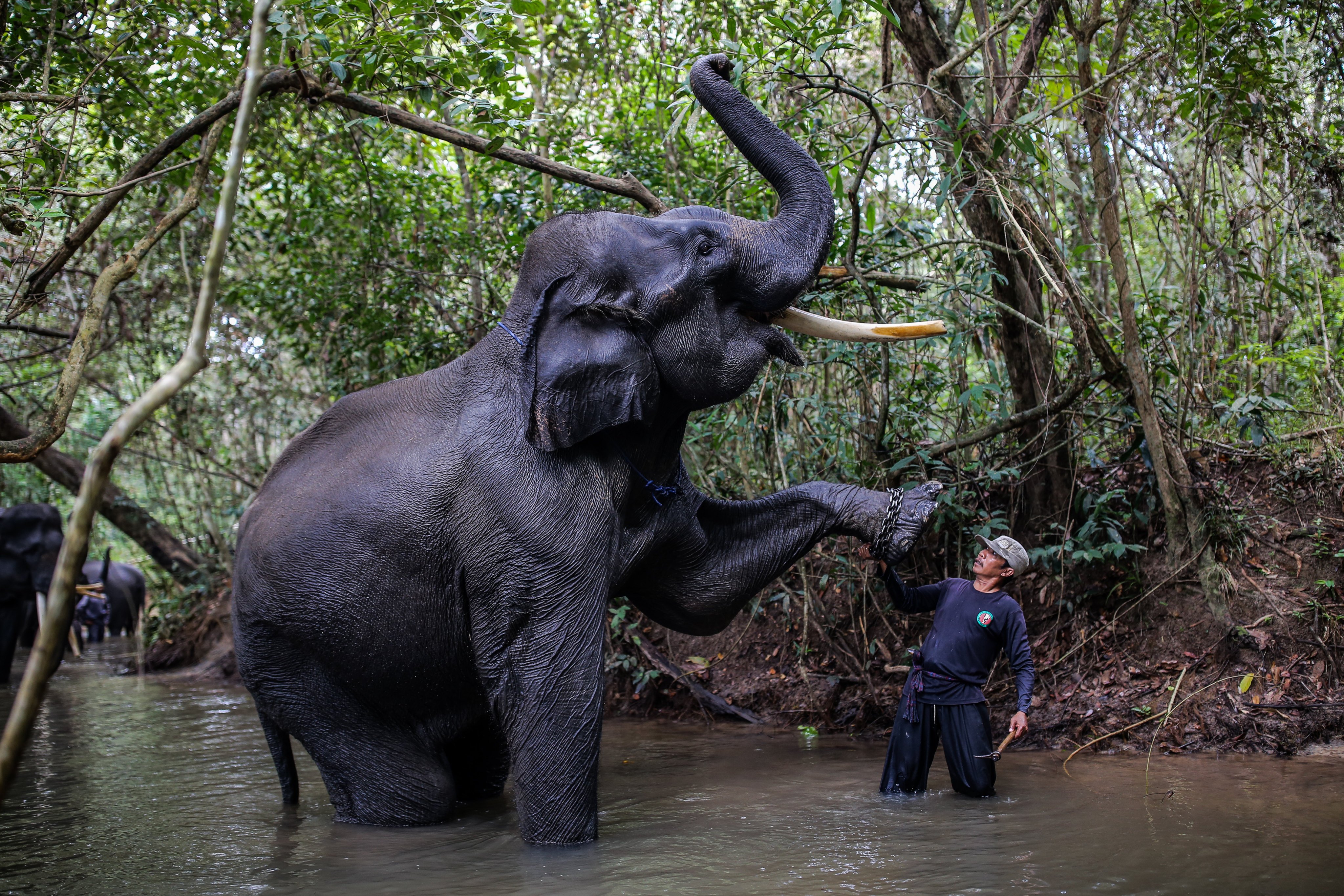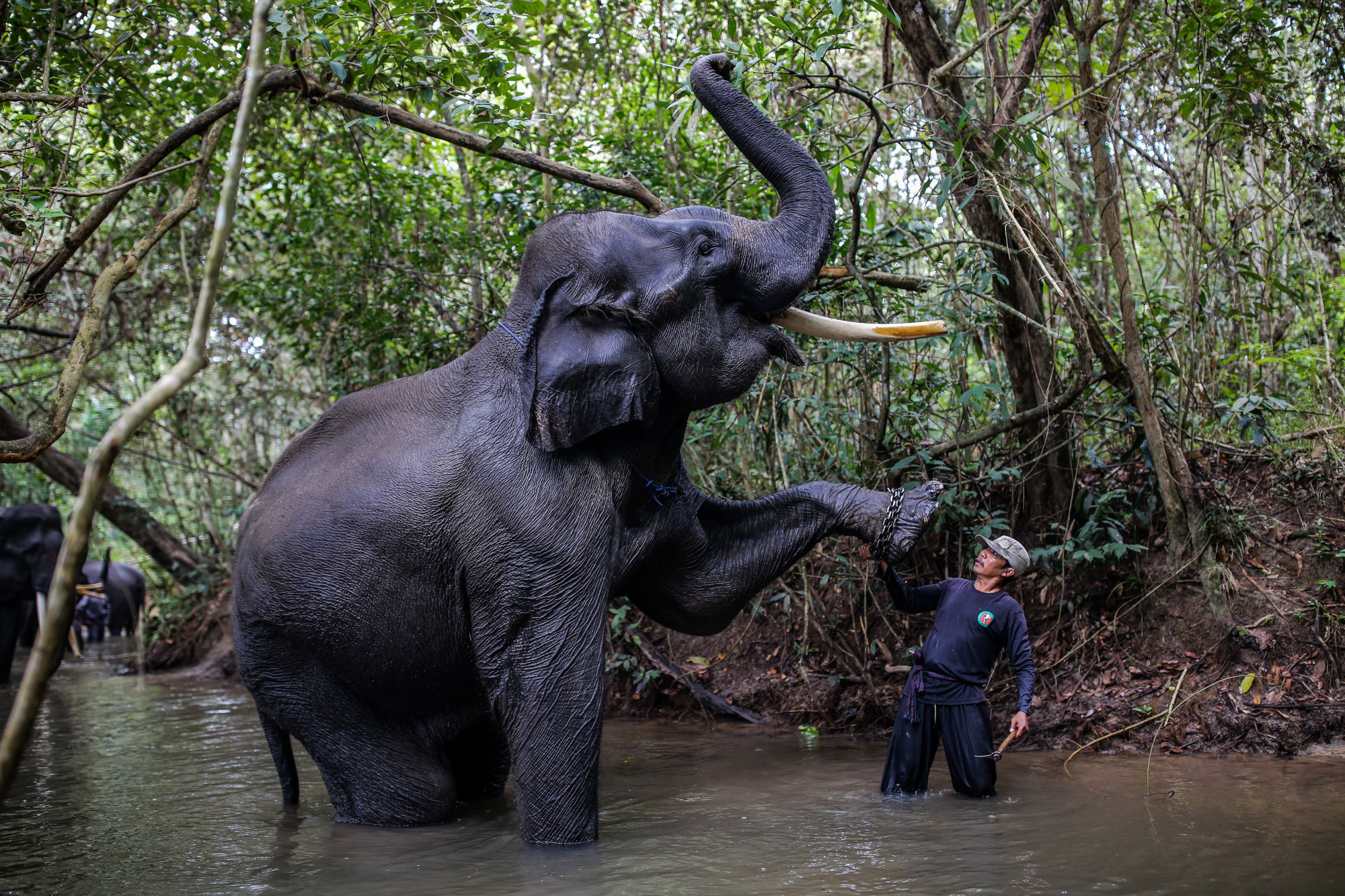
- Sumatran elephants could become extinct in the next 30 years, from poaching, habitat loss and clashes with farmers on the Indonesian island
Lush, rugged Sumatra is most known for its many active volcanoes, but Indonesia’s third largest island is also home to some of the largest populations of Asian elephants outside India and Sri Lanka.
Yet Sumatra has experienced rapid deforestation, losing more than two-thirds of its natural lowland forest in the past 25 years, the most suitable habitat for the resident elephants. The International Union for Conservation of Nature lists the Sumatran elephant as “critically endangered,” with its population shrinking from between 2,800 and 4,800 in 2007, to between 924 and 1,359 in 2021.
In East Lampung’s Way Kambas National Park alone, 22 Sumatran elephant carcasses have been found in the past 10 years. The numbers of this Asian elephant subspecies were already falling as a result of illegal logging and associated habitat loss, but these animals were all found without tusks.
Today, thermal-detection cameras enable rangers and mahouts to track suspected poachers after dark, but this approach is far from perfect, and scientists say that if current trends continue, through poaching or habitat loss, Sumatran elephants could become extinct in the wild in less than 30 years.

One evening in January 2021, close to the edge of Way Kambas, wild elephants came in search of sustenance near the village of Tegal Yoso, damaging land and property. It is not an isolated incident: subsistence farmers often wake to find their fields destroyed by pachyderms venturing out of their protected habitat in Way Kambas in search of food.
Farmers attempt damage control by digging trenches between the national park and their fields, modifying their cropping patterns, or just standing guard at night, but in the past 12 years elephants have killed or injured 24 people in villages not far from the park.
How one poem dealt an unprecedented body blow to Chinese in America
Elephant Response Units, comprising forest rangers as well as mahouts like Hanafi, who rides elephants from the Indonesian government’s elephant centres, have been trained for forest patrol.
“Wild elephants usually stay in their territory, it is humans who enter the elephants’ habitat and make them feel threatened,” says 87-year-old Hanafi, who has 30 years’ experience as a mahout, or elephant handler.
Hanafi has cared for hundreds of elephants and is currently assigned to Way Kambas to feed, bathe and care for Gading, a six-year-old who lost his mother. Whether she was poached, no one can say, but this tropical island’s elephant population can scarcely afford to lose her.











